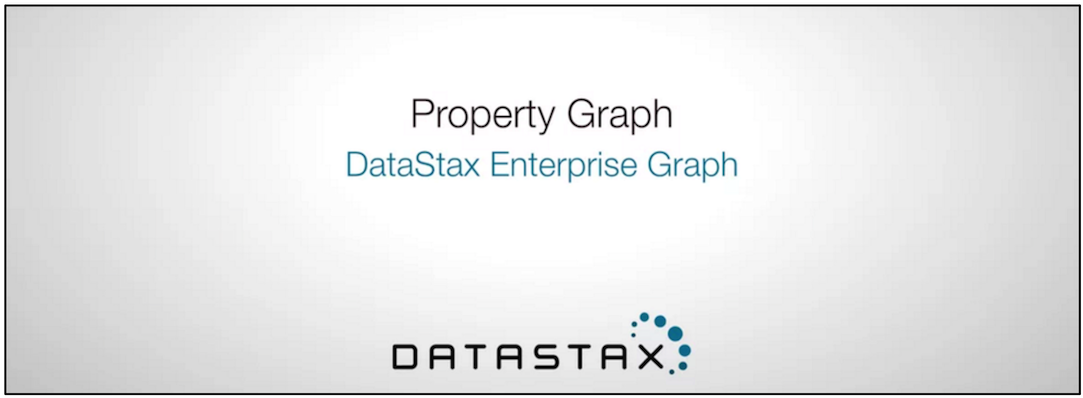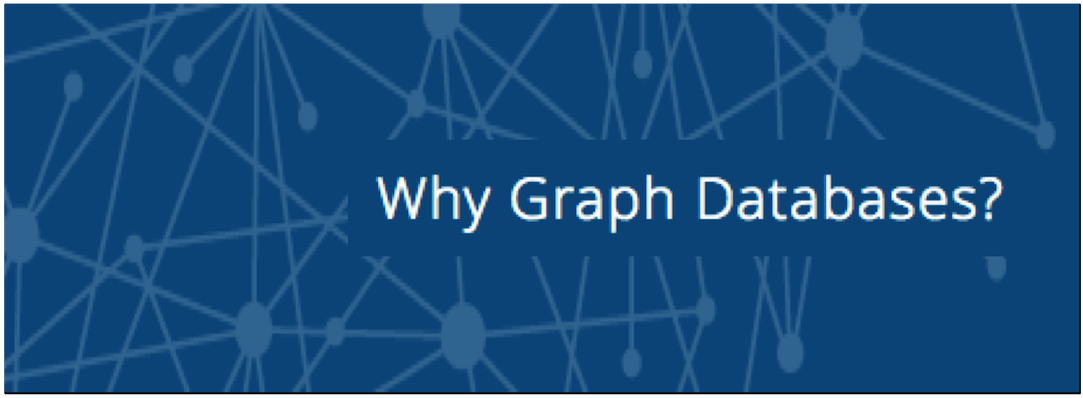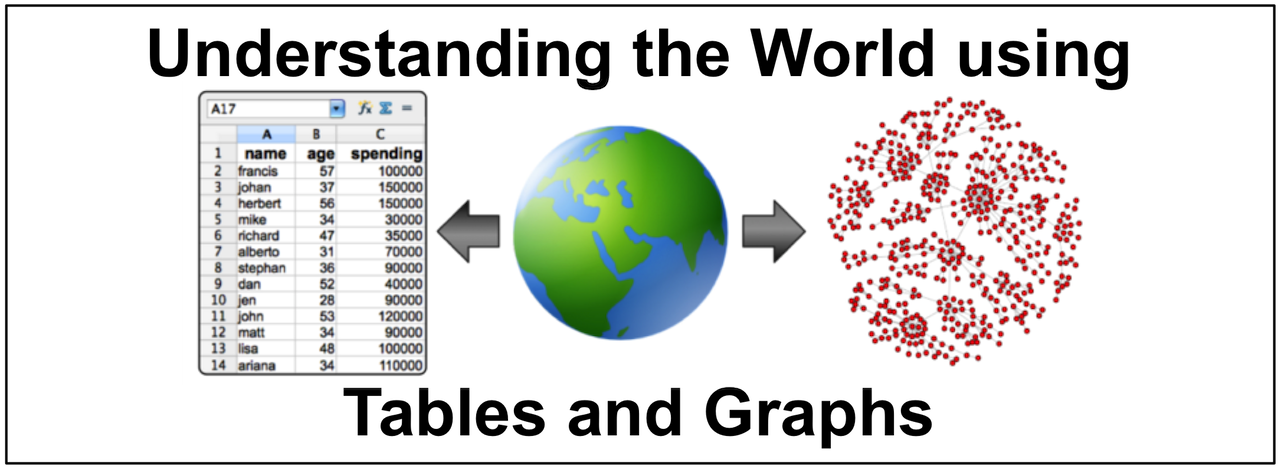Apache TinkerPop grows when 3rd party data systems and query languages utilize it. While Apache's distribution of TinkerPop does provide production ready implementations and tools, it is ultimately the larger ecosystem of providers that ensure TinkerPop's widespread adoption. There are two types of providers. The first are those that develop a (graph) database, (graph) processor, or (graph) analytics tool and want to offer their users TinkerPop-specific graph computing features. The other type of provider are language designers that have a (graph) query language they wish to have execute on the Gremlin traversal machine and thus, against any TinkerPop-enabled graph system.

Data System Providers
When a data system is TinkerPop-enabled, its users are able to model their domain as a graph and analyze that graph using the Gremlin graph traversal language. Furthermore, all TinkerPop-enabled graph systems integrate with one another allowing providers to easily expand their system's offerings as well as allowing users to choose appropriate graph technology for their application. Sometimes an application is best served by an in-memory, transactional graph database. Sometimes a multi-machine distributed graph database will do the job. Or perhaps the application requires both a distributed graph database for real-time queries and, in parallel, a Big(Graph)Data processor for batch analytics. Whatever the application's requirements, there exists a TinkerPop-enabled graph system out there to meet its needs.
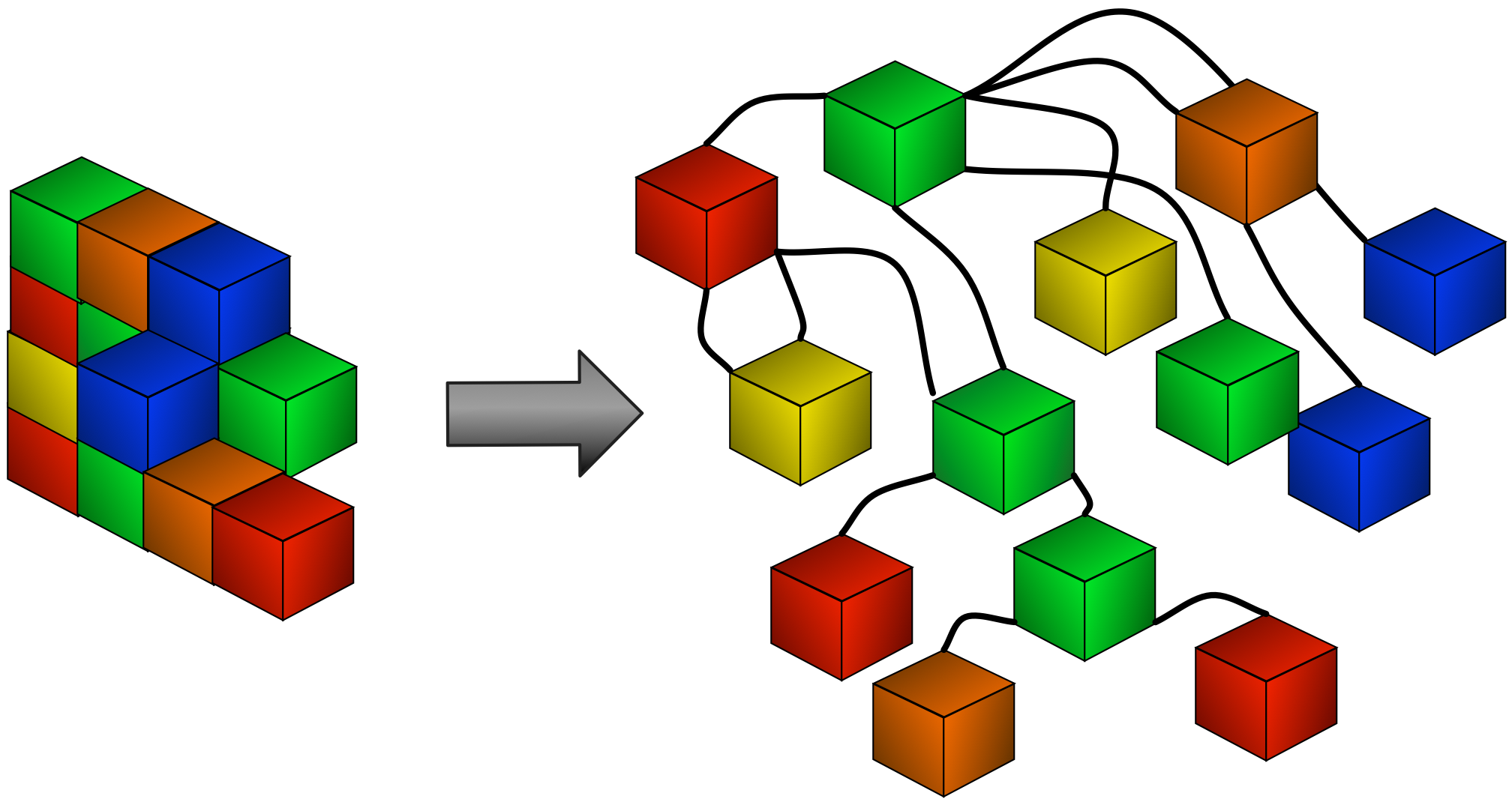
It is (relatively) easy for a data system to become TinkerPop-enabled. There are two interface packages that need to be implemented with one of them being optional. Once implemented the Gremlin traversal machine can talk to the provider's system and thus, so can any of their users' Gremlin traversals as well as any existing tools/technologies that have been designed to interact with a TinkerPop-enabled system.
- The Graph (required): These foundational interfaces define the semantics of the operations on a graph, vertex, edge, and property. Once implemented, the provider's data system can immediately be queried using Gremlin OLTP. However, providers may want to leverage a collection of provider-specific compiler optimizations called traversal strategies which can leverage their system's unique features (e.g. global indices, vertex-centric indices, sort orders, sequential scanners, push-down predicates, etc.).
- The GraphComputer (optional): All OLAP-based graph processors must implement the primary graph interfaces mentioned above as well as a set of parallel-processing
message-passing interfaces. However, it is possible for a data system to only implement the primary graph interfaces and still provide OLAP support to their users by integrating their
system with an existing
GraphComputerimplementation such as, for example,SparkGraphComputer(provided in Apache's distribution of TinkerPop).
Finally, there are other tools and technologies that the provider can leverage from TinkerPop such as Gremlin Server, Gremlin Console, and the like. The purpose of Apache TinkerPop is to make it easy for providers to add graph functionality to their system and/or to build a graph system from scratch and immediately have a query language, server infrastructure, metrics/reporting integration, cluster-based analytics and more.
- Gremlin traversal language: The primary benefit of TinkerPop is the Gremlin graph traversal language. This language was designed specifically for graph analysis and manipulation and is not complicated with an explicit JOIN syntax.
- Gremlin traversal machine: Every Gremlin language variant compiles to a language agnostic bytecode representation. That bytecode is ultimately translated to a machine-specific traversal. It is the responsibility of the Gremlin traversal machine to execute that traversal as a real-time OLTP query or as an analytic OLAP query (or both). Note that the Gremlin traversal machine is not bound to the Gremlin language. Any language can take advantage of the the Gremlin traversal machine by simply translating itself to Gremlin bytecode. In fact, compilers currently exist for SQL and SPARQL. However, using alternative languages for graph computing leads to significantly more complicated queries and typically does not match the expressivity provided by Gremlin.
- TinkerGraph: TinkerPop provides a simple, non-transactional, in-memory graph system called TinkerGraph. TinkerGraph is useful for exploring graphs that can fit in-memory, for doing tutorials and training without the overhead of database setup, etc. TinkerGraph boasts both OLTP and OLAP traversal machine support.
- Gremlin Console: A command line REPL is provided called Gremlin Console. This console is useful when learning TinkerPop as users can load provided datasets into a graph system and explore the Gremlin language without the overhead of creating a full-blown software project. Furthermore, the Gremlin Console is used extensively in production scenarios because it allows system administrators to interact with a local or remote graph to gather statistics, manually explore the data to ensure data integrity, and other useful tasks.
- Gremlin Server: It is typical for a graph database to exist on a separate machine from the user's application code. Gremlin Server bridges the network-divide
allowing users to seamlessly submit traversals for remote execution over a web-sockets based binary protocol. If provider already has a server, they can leverage TinkerPop-specific
components as needed (e.g. implement
RemoteConnection). Gremlin Server also provides an HTTP-based API, support for Ganglia/Graphite/JMX/more metrics, and a traversal routing framework for intelligent data/traversal co-location within a distributed graph database's machine cluster. - SparkGraphComputer: Apache Spark™ is a Big Data OLAP processor that simplifies the creation and execution of distributed data analytics.
SparkGraphComputerturns Spark into a Big(Graph)Data processor via the OLAP component of the Gremlin traversal machine. Users do not have to learn Spark's data processing language as Gremlin traversals execute over Spark. For graph system providers, they can boast Spark integration once a customInputRDD(orInputFormat) is developed. - Hadoop support: Apache Hadoop® has become a staple technology for Big Data applications. In TinkerPop,
SparkGraphComputercan pull data from the Hadoop File System (HDFS). TinkerPop provides a collection of Input- and OutputFormats for different graph serialization standards as well as tooling that makes it easy for users to interact with HDFS from the Gremlin Console or their application.
Information on how to build implementations of the various interfaces that TinkerPop supports can be found in the Provider Documentation.
TinkerPop-Enabled Graph Systems
Apache TinkerPop is always looking to point users to graph systems that are TinkerPop-enabled. Please read Apache TinkerPop's provider listing policy for adding new projects to the listing below. The listing is intended to help users identify TinkerPop-enabled graph systems and does not constitute an endorsement by Apache TinkerPop nor the Apache Software Foundation.
 Amazon Neptune is a fast, reliable, fully-managed graph database service that makes it easy to build and run applications that work with highly connected datasets.
Amazon Neptune is a fast, reliable, fully-managed graph database service that makes it easy to build and run applications that work with highly connected datasets.
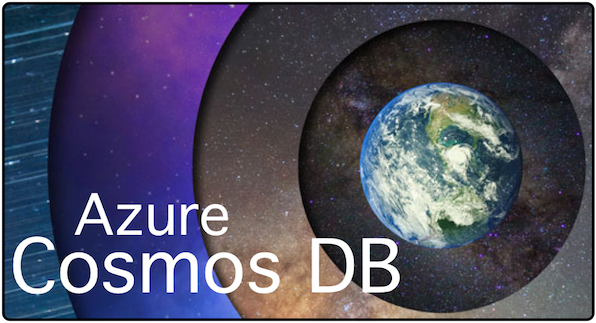 Azure Cosmos DB™ is Microsoft's globally distributed, multi-model database service for mission-critical applications. Azure Cosmos DB provides turn-key global distribution, elastic scaling of throughput and storage worldwide, five well-defined consistency levels, and guaranteed high availability, all backed by industry-leading SLAs. It is multi-model with support for the Gremlin graph traversal language.
Azure Cosmos DB™ is Microsoft's globally distributed, multi-model database service for mission-critical applications. Azure Cosmos DB provides turn-key global distribution, elastic scaling of throughput and storage worldwide, five well-defined consistency levels, and guaranteed high availability, all backed by industry-leading SLAs. It is multi-model with support for the Gremlin graph traversal language.
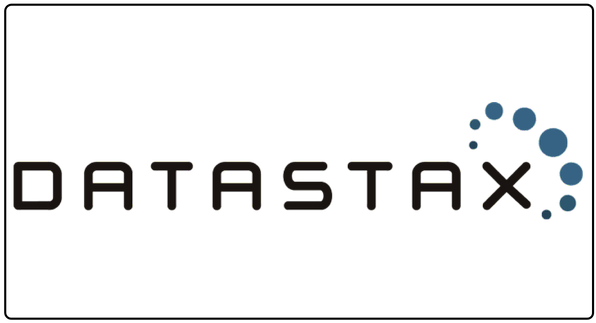 DataStax Enterprise Graph™, part of DataStax Enterprise's multi-model platform, is a real-time graph database built for cloud applications that need to manage complex and highly connected data. Built on the foundation of Apache Cassandra and Apache TinkerPop, DataStax Enterprise Graph delivers continuous uptime along with predictable performance and scale, while remaining operationally simple to manage.
DataStax Enterprise Graph™, part of DataStax Enterprise's multi-model platform, is a real-time graph database built for cloud applications that need to manage complex and highly connected data. Built on the foundation of Apache Cassandra and Apache TinkerPop, DataStax Enterprise Graph delivers continuous uptime along with predictable performance and scale, while remaining operationally simple to manage.
 HugeGraph is an Apache2 licensed high-speed, distributed and scalable OLTP and OLAP graph database, fully optimized to store hundreds of billions vertices/edges and analyze complex relationships between high-connected data. It is modeled as property graph and compatible with Apache TinkerPop and Gremlin. Due to high efficiency, availability and scalability, HugeGraph attracts a large amount of users and has been widely used in social network analysis, fraud detection and knowledge graph.
HugeGraph is an Apache2 licensed high-speed, distributed and scalable OLTP and OLAP graph database, fully optimized to store hundreds of billions vertices/edges and analyze complex relationships between high-connected data. It is modeled as property graph and compatible with Apache TinkerPop and Gremlin. Due to high efficiency, availability and scalability, HugeGraph attracts a large amount of users and has been widely used in social network analysis, fraud detection and knowledge graph.
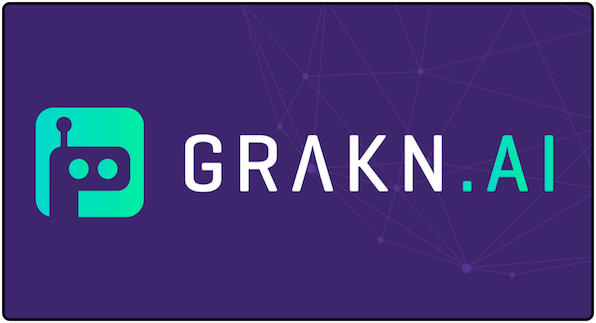 GRAKN.AI™ is a distributed knowledge graph that brings knowledge ontologies and transactional data together to enable intelligent querying of data. Querying is performed through the language: Graql, a declarative, knowledge-oriented graph query language for retrieving explicitly stored and implicitly derived information, as well as to perform graph analytics and automated reasoning.
GRAKN.AI™ is a distributed knowledge graph that brings knowledge ontologies and transactional data together to enable intelligent querying of data. Querying is performed through the language: Graql, a declarative, knowledge-oriented graph query language for retrieving explicitly stored and implicitly derived information, as well as to perform graph analytics and automated reasoning.
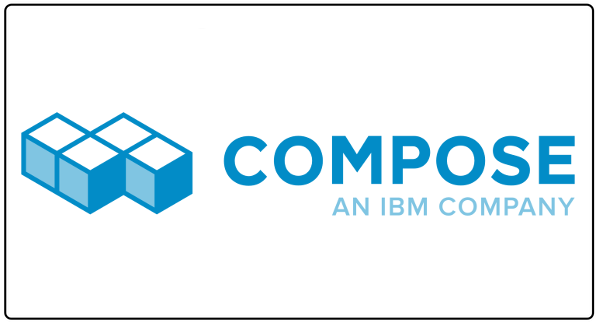 IBM® Compose for JanusGraph provides a fully-managed, highly-available, and production-ready JanusGraph on AWS, GCP or IBM Cloud. Deployed in minutes, every JanusGraph deployment on Compose is built with highly available storage and graph engines. The JanusGraph Storage engine is a cluster of the Scylla database. As usage increases or application requirements change, users can vertically or horizontally scale the JanusGraph Engine and Storage to increase throughput or storage.
IBM® Compose for JanusGraph provides a fully-managed, highly-available, and production-ready JanusGraph on AWS, GCP or IBM Cloud. Deployed in minutes, every JanusGraph deployment on Compose is built with highly available storage and graph engines. The JanusGraph Storage engine is a cluster of the Scylla database. As usage increases or application requirements change, users can vertically or horizontally scale the JanusGraph Engine and Storage to increase throughput or storage.
 JanusGraph® is an Apache2 licensed scalable, distributed graph database optimized for storing and querying graphs containing hundreds of billions of vertices and edges distributed across a multi-machine cluster. JanusGraph is a transactional database that can support thousands of concurrent users executing complex Gremlin traversals in real time. JanusGraph also provides an in-memory, compression-based OLAP processor as well as integrates with Apache TinkerPop's Spark OLAP processors.
JanusGraph® is an Apache2 licensed scalable, distributed graph database optimized for storing and querying graphs containing hundreds of billions of vertices and edges distributed across a multi-machine cluster. JanusGraph is a transactional database that can support thousands of concurrent users executing complex Gremlin traversals in real time. JanusGraph also provides an in-memory, compression-based OLAP processor as well as integrates with Apache TinkerPop's Spark OLAP processors.
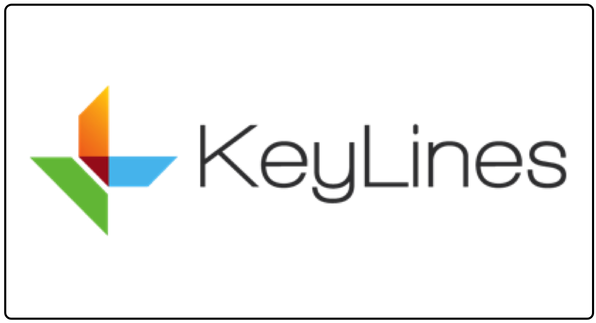 KeyLines™ is an Apache TinkerPop and Gremlin compatible JavaScript SDK for quickly and easily building powerful, custom and scalable graph visualization applications. The KeyLines SDK offers a rich library of functionality to help you visualize and explore the data in your graph database, including graph layouts, social network analysis measures, filtering, temporal graph visualization and geospatial graph analysis. It allows the visualization of complex graph data at scale.
KeyLines™ is an Apache TinkerPop and Gremlin compatible JavaScript SDK for quickly and easily building powerful, custom and scalable graph visualization applications. The KeyLines SDK offers a rich library of functionality to help you visualize and explore the data in your graph database, including graph layouts, social network analysis measures, filtering, temporal graph visualization and geospatial graph analysis. It allows the visualization of complex graph data at scale.
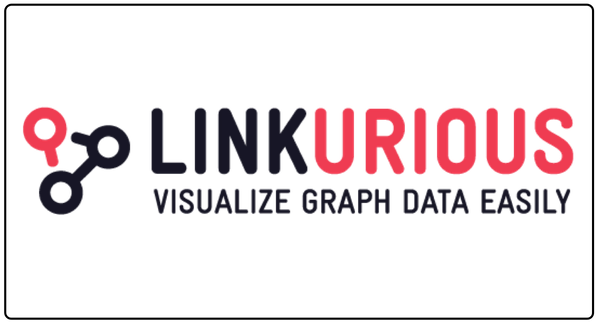 Linkurious™ is a browser-based graph visualization software to search, explore and visualize connected data. It is compatible with Apache TinkerPop and thus, any TinkerPop-enabled graph system. Linkurious provides enterprise-ready security (authentication, access rights, audit) and flexibility (API, linkurious.js JS graph visualization library) to help software architects successfully deploy graph capabilities within their organizations.
Linkurious™ is a browser-based graph visualization software to search, explore and visualize connected data. It is compatible with Apache TinkerPop and thus, any TinkerPop-enabled graph system. Linkurious provides enterprise-ready security (authentication, access rights, audit) and flexibility (API, linkurious.js JS graph visualization library) to help software architects successfully deploy graph capabilities within their organizations.
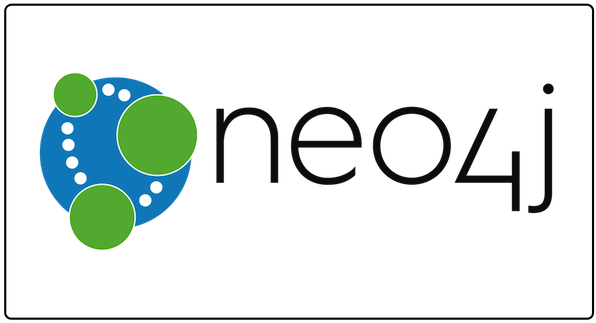 Neo4j™ is the most widely used open source, transactional graph database with a large active user and customer community. Because of its scalability and ease of use, Neo4j is applied in a wide variety of use cases from fraud detection, access control to recommendation and investigative journalism. Along with the openCypher graph query language, Neo4j also supports Apache TinkerPop and currently serves as its OLTP reference implementation.
Neo4j™ is the most widely used open source, transactional graph database with a large active user and customer community. Because of its scalability and ease of use, Neo4j is applied in a wide variety of use cases from fraud detection, access control to recommendation and investigative journalism. Along with the openCypher graph query language, Neo4j also supports Apache TinkerPop and currently serves as its OLTP reference implementation.
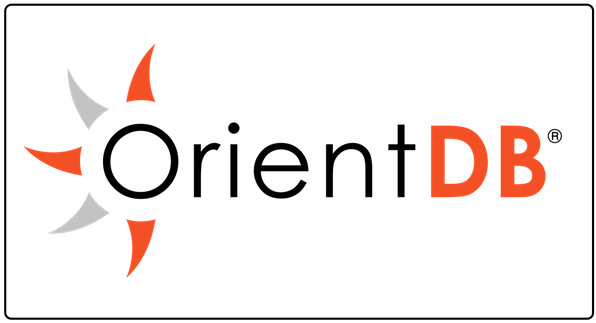 OrientDB™ is an open source distributed graph database with native support for Apache TinkerPop and the Gremlin graph traversal language. OrientDB handles relationships by using persistent pointers, rather than expensive join runtime operations. This guarantees a fast, constant O(1) time for traversing, no matter the database size. Furthermore, OrientDB is not only a graph database, but a multi-model database able to manage documents, keys/values, objects, full-text and spatial data.
OrientDB™ is an open source distributed graph database with native support for Apache TinkerPop and the Gremlin graph traversal language. OrientDB handles relationships by using persistent pointers, rather than expensive join runtime operations. This guarantees a fast, constant O(1) time for traversing, no matter the database size. Furthermore, OrientDB is not only a graph database, but a multi-model database able to manage documents, keys/values, objects, full-text and spatial data.
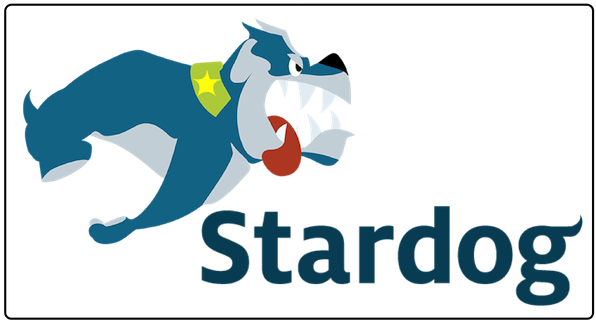 Stardog™ is a graph database optimized for enterprise data unification. It supports both semantic graphs, via RDF, SPARQL, and OWL, as well as property graphs via Apache TinkerPop and Gremlin--it's the only graph database that supports both models over the same database, simultaneously. Stardog also supports hybrid data unification architectures, seamlessly blending data warehouse, system of record, and virtual query strategies. Stardog is suited for enterprise data silo challenges.
Stardog™ is a graph database optimized for enterprise data unification. It supports both semantic graphs, via RDF, SPARQL, and OWL, as well as property graphs via Apache TinkerPop and Gremlin--it's the only graph database that supports both models over the same database, simultaneously. Stardog also supports hybrid data unification architectures, seamlessly blending data warehouse, system of record, and virtual query strategies. Stardog is suited for enterprise data silo challenges.
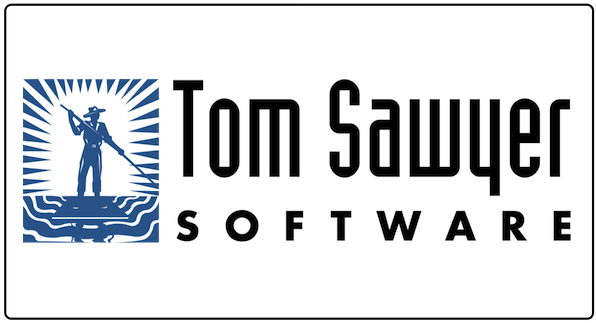 Tom Sawyer Perspectives™ is advanced graphics-based software for building enterprise-class data relationship visualization and analysis applications. It is a complete Software Development Kit (SDK) with a graphics-based design and preview environment. Tom Sawyer Perspectives combines visualization, layout, and analysis technology with an elegant platform architecture. Tom Sawyer Perspectives enables interaction with graph database systems via Apache TinkerPop.
Tom Sawyer Perspectives™ is advanced graphics-based software for building enterprise-class data relationship visualization and analysis applications. It is a complete Software Development Kit (SDK) with a graphics-based design and preview environment. Tom Sawyer Perspectives combines visualization, layout, and analysis technology with an elegant platform architecture. Tom Sawyer Perspectives enables interaction with graph database systems via Apache TinkerPop.
Query Language Providers
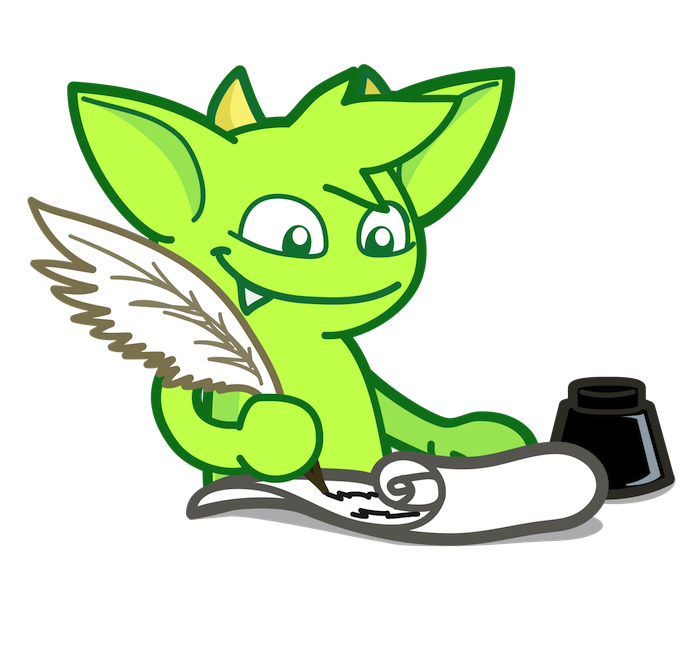
g.V().has("person","name","gremlin").
out("knows").out("created").
hasLabel("project").
values("stars").mean()Distinct query language: Query languages such as SQL and SPARQL are significantly different from Gremlin in that they require a special purpose compiler in order to generate a traversal. For this reason, SQL and SPARQL Gremlin compilers currently exist. Note that, within reason, Gremlin compilers do not need to concern themselves with an optimal compilation (only a semantically correct compilation) as the Gremlin traversal machine will leverage traversal strategies for both compile-time and runtime optimizations. Moreover, the language designer can rest assured that queries in their language will be able to evaluate as either an OLTP or OLAP query. The example on the right is a SPARQL query that determines the average rating for Gremlin's friends' projects. It is because of the Gremlin traversal machine, that that SPARQL query can immediately execute over Spark (for instance).
SELECT AVG(?stars) WHERE {
?a v:label person .
?a v:name "gremlin" .
?a e:knows ?b .
?b e:created ?c .
?c v:label "project" .
?c v:stars ?stars
}g.V().has('person','name','gremlin').
out('knows').out('created').
hasLabel('project').stars.mean()SELECT(Average.of(Stars)).
FROM(Projects)
WHERE(Created.by(Friends.of("gremlin")))TinkerPop-Enabled Query Languages
Apache TinkerPop is always looking to point users to TinkerPop-enabled graph query languages. Please read Apache TinkerPop's provider listing policy for adding new projects to the listing below. The listing is intended to help users identify TinkerPop-enabled compilers and languages and does not constitute an endorsement by Apache TinkerPop nor the Apache Software Foundation.
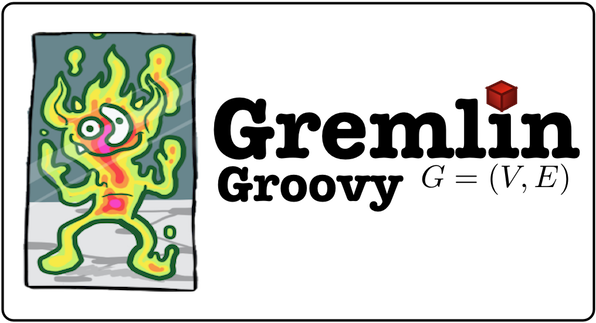 Gremlin-Groovy represents Gremlin inside the Groovy language and can be leveraged by any JVM-based project either through gmaven or its JSR-223 ScriptEngine implementation. It also serves as the Gremlin Console language.
Gremlin-Groovy represents Gremlin inside the Groovy language and can be leveraged by any JVM-based project either through gmaven or its JSR-223 ScriptEngine implementation. It also serves as the Gremlin Console language.
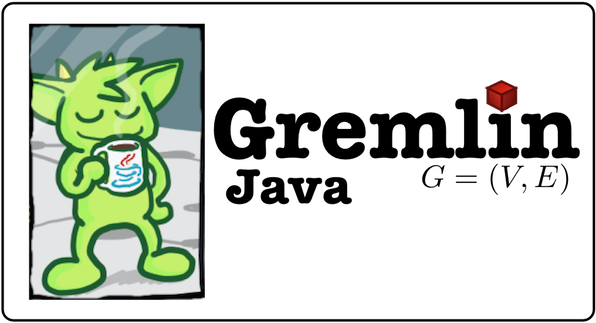 Gremlin-Java represents Gremlin inside the Java language. Gremlin-Java is considered the canonical, reference implementation of Gremlin and is the primary compiler for all lambda-free bytecode due to its speed relative to other script-based, JVM variants.
Gremlin-Java represents Gremlin inside the Java language. Gremlin-Java is considered the canonical, reference implementation of Gremlin and is the primary compiler for all lambda-free bytecode due to its speed relative to other script-based, JVM variants.
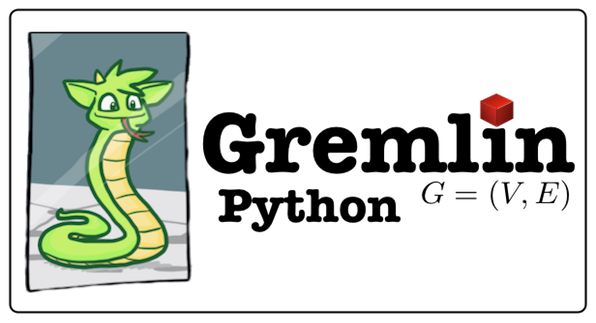 Gremlin-Python represents Gremlin inside the Python language and can be used by any Python virtual machine such as CPython. Gremlin-Python traversals translate to Gremlin bytecode for RemoteConnection execution (e.g. Gremlin Server).
Gremlin-Python represents Gremlin inside the Python language and can be used by any Python virtual machine such as CPython. Gremlin-Python traversals translate to Gremlin bytecode for RemoteConnection execution (e.g. Gremlin Server).
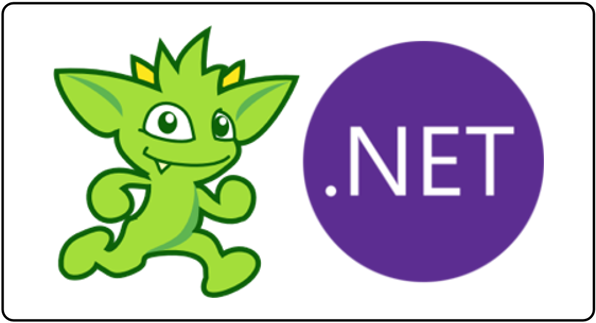 Gremlin.Net represents Gremlin inside the C# language and can be used by any .NET-based project. Gremlin.Net traversals translate to Gremlin bytecode for RemoteConnection execution (e.g. Gremlin Server).
Gremlin.Net represents Gremlin inside the C# language and can be used by any .NET-based project. Gremlin.Net traversals translate to Gremlin bytecode for RemoteConnection execution (e.g. Gremlin Server).
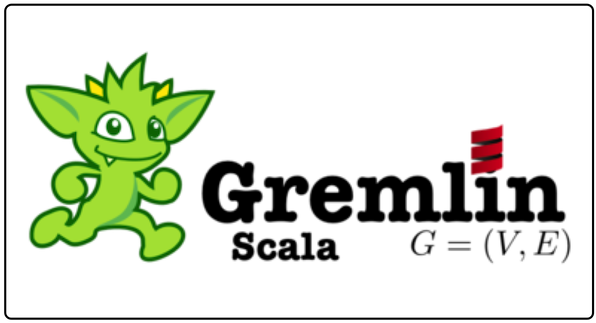 Gremlin-Scala is a Gremlin language variant that uses standard Scala functions, provides a convenient DSL to create vertices and edges, ensures type safe traversals, and incurrs minimal runtime overhead by only allocating instances if absolutely necessary.
Gremlin-Scala is a Gremlin language variant that uses standard Scala functions, provides a convenient DSL to create vertices and edges, ensures type safe traversals, and incurrs minimal runtime overhead by only allocating instances if absolutely necessary.
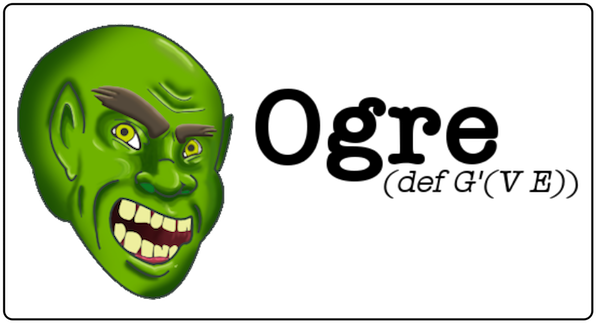 Ogre is a Gremlin language variant for Clojure. It provides an API that enhances the expressivity of Gremlin within Clojure, it doesn't introduce any significant amount of performance overhead, and it can work with any TinkerPop-enabled graph database or analytic system.
Ogre is a Gremlin language variant for Clojure. It provides an API that enhances the expressivity of Gremlin within Clojure, it doesn't introduce any significant amount of performance overhead, and it can work with any TinkerPop-enabled graph database or analytic system.
 SPARQL-Gremlin is a compiler used to transform SPARQL queries into Gremlin bytecode. It is based on the Apache Jena SPARQL processor ARQ, which provides access to a syntax tree of a SPARQL query.
SPARQL-Gremlin is a compiler used to transform SPARQL queries into Gremlin bytecode. It is based on the Apache Jena SPARQL processor ARQ, which provides access to a syntax tree of a SPARQL query.
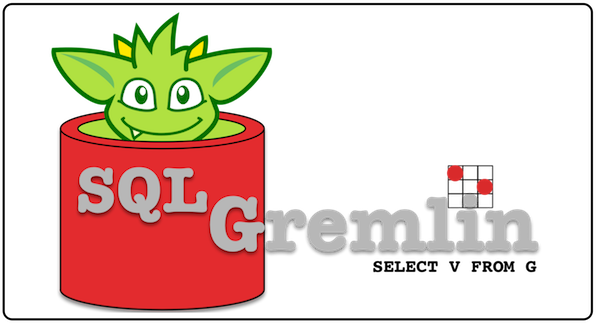 SQL-Gremlin compiles ANSI SQL to Gremlin bytecode and is useful for connecting JDBC reporting/business
intelligence tools to any TinkerPop-enabled graph system.
SQL-Gremlin compiles ANSI SQL to Gremlin bytecode and is useful for connecting JDBC reporting/business
intelligence tools to any TinkerPop-enabled graph system.


